|
|
|
||||||||||
|
The Yenisei super-heavy rocket Special report written and illustrated by Anatoly Zak; Editor: Alain Chabot In 2018, after several years of engineering studies, the Russian government approved the development of a super-heavy rocket, referring to a space launcher starting with a payload of more than 80 tons to the low Earth's orbit. Only the United States and the USSR were able to build vehicles of this class during the Cold War. However, a new race to mega rockets is now underway with the introduction of the American Falcon Heavy rocket, closely followed by the even bigger Space Launch System, SLS. A Chinese vehicle with similar capabilities is also believed to be in the works. This section provides in-depth history and the exclusive coverage of latest developments in the Russian super-heavy rocket project.
The Yenisei super-heavy rocket program at a glance (as of 2019):
Our introductory articles on the subject in Popular Mechanics: (1, 2) |
|||||||||||
| SOVIET AND RUSSIAN SUPER-ROCKET PROJECTS | |||||||||||
 |
At the end of the 1950s, the OKB-1 design bureau led by Sergei Korolev began development of a super-heavy rocket booster designated N1. Originally, it was proposed as a multipurpose vehicle for military and scientific tasks, including launching space stations, expeditions to the Moon and even human missions to Mars. |
||||||||||
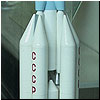 |
At the beginning of the 1960s, internal rivalry marred the efforts of the Soviet space industry to respond to the US challenge to land a man on the Moon. Korolev's rival, Vladimir Chelomei, proposed an alternative rocket to the N1 launcher. Designated UR-700, this monstrous vehicle would make even Korolev's giant N1 look small. The UR-700 would employ modular design, which would allow to test and ship individual boosters of the vehicle separately. |
||||||||||
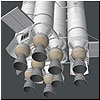 |
In parallel with the development of the "regular" UR-700, Chelomei's engineers drafted a much bigger follow-on vehicle, which would be equipped with nuclear engines. (658) Known as Skhema "A" (Configuration "A") the system would feature a solid-core nuclear reactor and enable the UR-700 to deliver as much as 250 tons into the Earth orbit. |
||||||||||
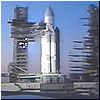 |
Starting with a clean sheet after the cancellation of the N1 project in 1974, it took more than a decade for the USSR to field the Energia booster, which made two largely successful flights in 1987 and 1988. The 60-meter vehicle was acclaimed as the most advanced rocket of our time. However the disintegration of the USSR in 1991 left Energia to rust in Baikonur. |
||||||||||
|
At the end of 1997, RKK Energia, the prime developer of the Energia rocket, proposed a heavy-lifting rocket named Sodruzhestvo (Alliance). It would be built jointly by Russia, Ukraine, Kazakhstan and Belarus and based in Baikonur. In 2012, RKK Energia revived its proposal again, hoping for improved funding and better relations between Russia and Ukraine. |
|||||||||||
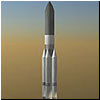 |
In March 2005, GKNPTs Khrunichev unveiled ambitious plans for the country's participation in the US-led initiative to return to the Moon. The Moscow-based company proposed a super heavy rocket booster, along with a new generation of partially reusable spacecraft, which could support manned expeditions to the Moon and, eventually to Mars. |
||||||||||
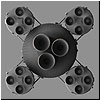 |
Around 2008, GKNPTs Khrunichev drafted a pair of launchers designated Amur-5 and Yenisei-5. While Amur-5 was mostly a repackaged version of Angara-100, Yenisei-5 had a radically different approach, featuring RD-0120 engines revived from the Energia project. |
||||||||||
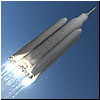 |
On Jan. 10, 2013, TsSKB Progress signed an agreement with the Russian space agency's strategic planning institute, TsNIIMash, to conduct a study code-named Oblik–TsSKB. Similar contracts were signed with other key Russian rocket developers. The company planned to design a heavy rocket with a payload of 70 tons. |
||||||||||
 |
Around 2013, the advanced planning division at GKNPTs Khrunichev drafted a family of launchers with a payload ranging from 16.6 tons to almost 130 tons to meet the requirement of Roskosmos for phased introduction of a super-heavy rocket. |
||||||||||
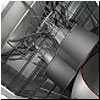 |
Along with the two Russia's leading rocket manufacturers -- TsSKB Progress and GKNPTs Khrunichev -- RKK Energia, the nation's key developer of manned spacecraft, proposed its architecture of a super-heavy launcher in 2013. |
||||||||||
 |
During 2014, the concept of a Moon rocket proposed at RKK Energia continued to evolve. By that time, the project had received the designation Energia-5KV, where "V" stood either for "Vostochny launch site" or "vodorod," a Russian term for hydrogen. In the latter case, the name would emphasize more reliance on hydrogen fuel in the latest incarnation of the vehicle. | ||||||||||
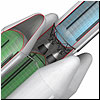 |
At the end of 2016 -- the beginning of 2017, RKK Energia formulated a new design for a super-heavy rocket for Russia's prospective lunar-exploration program. The new architecture, approaching NASA's Space Launch System, SLS, in size and payload, had two possible variations of the upper stage. |
||||||||||
| DEVELOPMENT HISTORY OF THE RUSSIAN YENISEI SUPER-ROCKET PROJECT | |||||||||||
From the publisher: Pace of our development depends primarily on the level of support from our readers! |
|||||||||||
2013-2016: Ups and downs of the super-heavy project By the middle of 2016, the Russian scenario for lunar expeditions based on four Angara-5V rockets was deemed too risky and unreliable. Instead, Russia's strategic plans for human exploration of deep space defaulted back to a much larger super-heavy rocket. |
|||||||||||
 |
2017: Russia charts new roadmap to super-heavy rocket After several years of discussions at the political and engineering levels, the Russian government finally took the first steps toward lining up long-term funding for the super-heavy rocket. On Nov. 13, Roskosmos issued a technical assignment to RKK Energia to develop a preliminary design of the super-heavy rocket. |
||||||||||
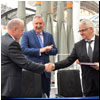 |
2018: Development begins (INSIDER CONTENT) In 2018, after several years of stop-and-go conceptual studies, the Russian space industry finally went to the drawing board to begin the detailed design of a super-heavy rocket which would be capable of launching human missions to the Moon, as well as sending new-generation vehicles toward Mars, Jupiter and other planets. |
||||||||||
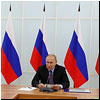 |
2019: Roskosmos selects the final design (INSIDER CONTENT) At the end of January 2019, Roskosmos State Corporation chose the final design out of four contenders for the architecture of the future super-heavy rocket. The officials also locked in the amount of payload that the future vehicle would have to deliver into orbit around the Moon. |
||||||||||
 |
2020: Super-heavy project hits a snag (INSIDER CONTENT) By the end of 2020, the Russian super-heavy rocket faced more financial uncertainty and another identity crisis, as the Roskosmos leadership pushed for a radical switch of the rocket's booster stages from kerosene to methane fuel. |
||||||||||
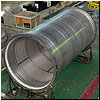 |
2021: Super-heavy rocket stalled by propellant dilemma (INSIDER CONTENT) During first half of 2021, Russian engineers evaluated a new roadmap toward the super-rocket through a series of progressively larger methane-burning launchers, while Roskosmos officially discontinued the program. |
||||||||||
| PROPOSED VARIANTS OF THE SUPER-HEAVY LAUNCHER | |||||||||||
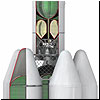 |
The first option to be considered in the course of the preliminary design of the super-heavy program will be a three-stage vehicle with a liftoff mass of 2,785 tons. It will be featuring six standard boosters on the first and second stages borrowed from the Soyuz-5 project. They will all have a diameter of 4.1 meters and carry RD-171MV engine. |
||||||||||
 |
The second option to be considered in the course of the preliminary design of the super-heavy program will be a three-stage vehicle with a liftoff mass of between 2,830 and 2,840 tons. (These numbers apparently include the mass of two space tugs, which will be used for maneuvers to escape Earth's orbit and to brake near the Moon.) |
||||||||||
|
The third option under consideration evaluates an Energia-like vehicle capable of hauling up to 120 tons of cargo into low orbit and up to 29 tons into the orbit around the Moon. Whereas the original Energia carried a side-mounted space plane, the new vehicle was designed to carry payloads in its nose cone, sending them on lunar-bound trajectories. |
|||||||||||
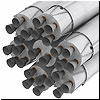 |
Variant 4/Yenisei (winning configuration)
(INSIDER CONTENT)
In November 2018, Head of Roskosmos Dmitry Rogozin announced that the RD-180 engine, originally developed at Moscow-based NPO Energomash for the US Atlas rocket, would be used on a future Russian launch vehicle. |
||||||||||
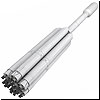 |
At the beginning of 2019, during the final review of a development path toward the super-heavy launcher, the strategists at Roskosmos also attempted to take an early look at the maximum extent of the program. |
||||||||||
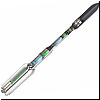 |
Roskosmos promises a 140-ton super-launcher (INSIDER CONTENT) Speaking at the October 2019 conference in the Bauman school, the primary engineering college preparing cadre for the Russian space industry, Head of Roskosmos Dmitry Rogozin described plans for a launch vehicle with a payload of 140 tons to the low Earth orbit. According to Rogozin, the giant vehicle would be developed in the second phase of the project. |
||||||||||
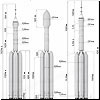 |
Evolution of the super-heavy rocket design in 2019 (INSIDER CONTENT) The design of the super-heavy rocket saw a number of adjustments and refinements in the course of the preliminary design in 2019. The detailing of the overall architecture and individual components also continued. |
||||||||||
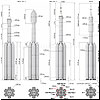 |
Evolution of the super-heavy rocket design in 2020 (INSIDER CONTENT) During 2020, the Roskosmos State Corporation continued work on the Preliminary Design of the super-heavy rocket. At the same time, the giant vehicle saw major revisions significantly affecting its overall architecture and its flight profile. |
||||||||||
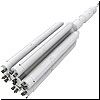 |
Super-heavy Amur-SPG, Variant 1 (INSIDER CONTENT) In early 2021, Russian engineers formulated a baseline architecture of the super-heavy rocket relying entirely on methane fuel as an alternative to a traditional kerosene-burning design. |
||||||||||
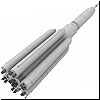 |
Super-heavy Amur-SPG, Variant 2 (INSIDER CONTENT) Also in 2021, the design of a rocket capable of delivering lunar expedition in a single launch was put on the table. The far-fetched configuration exceeded in mass and capabilities NASA's Saturn-5 that launched Apollo expeditions, but relied primarily on methane fuel instead of hydrogen. |
||||||||||
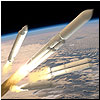 |
Last-ditch attempt to redesign super-heavy launcher (INSIDER CONTENT) In the second half of 2021, Russian engineers formulated a radically different architecture of the super-heavy rocket and the lunar expedition scenario to address multiple financial, technical and scheduling problems faced by the project. |
||||||||||
| UPPER STAGES AND PROPULSION | |||||||||||
 |
How super-heavy rocket project is organized (INSIDER CONTENT) The unprecedented complexity of the super-heavy rocket development required Roskosmos to form a cluster of sub-programs focused on various aspects of the multi-year effort, including teams focused on boosters with very diverse structural design, propulsion systems and propellants, as well as a multitude of payload interfaces and support hardware on the ground. |
||||||||||
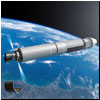 |
Dreadnought upper stage (INSIDER CONTENT) For the fourth stage of its super-heavy rocket, Roskosmos plans a powerful hydrogen-fueled space tug intended to send human missions into deep space. If ever built, it would be Russia's largest hydrogen booster since the Soviet-era Energia rocket. |
||||||||||
 |
Drakar upper stage (INSIDER CONTENT) The super-heavy rocket project also includes a fifth stage internally named Drakar, which will play crucial roles during the flight from the Earth to the Moon. However, before its full-scale development can begin, the creators of the future space tug have to answer an array of technical questions going back to the beginnings of the lunar exploration. |
||||||||||
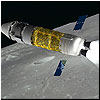 |
The RTB space tug for the super-heavy rocket (INSIDER CONTENT) In 2020, the developers of the Russian super-heavy rocket decided to replace two of the vehicle's top boosters with a single space tug burning kerosene. As a result, the entire rocket would rely on the same fuel and avoid the use of the more potent, but hard-to-use, hydrogen. |
||||||||||
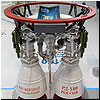 |
RD-180MV engine (INSIDER CONTENT) The third stage of the giant vehicle was to be propelled by an upgraded version of the RD-180 engine which was originally developed for the American Atlas rocket. It was the third attempt to give the RD-180 a new life aboard an indigenously built launch vehicle. |
||||||||||
| LAUNCH AND SUPPORT INFRASTRUCTURE | |||||||||||
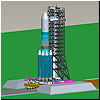 |
Launch facility for a super rocket (INSIDER CONTENT) From the outset of the Vostochny project, Roskosmos assumed that at the conclusion of the third phase of the space center's development, it would be able to host a super-heavy launch vehicle with a payload up to 100 tons. As of 2017, the pad for a super-heavy launcher was promised to be completed within a decade. |
||||||||||
 |
2019: Super-heavy launch complex changes drastically in early design (INSIDER CONTENT) The latest effort of the Russian industry to develop the super-heavy rocket project includes studies of the layout and architecture of the monumental launch facility capable of hosting the giant vehicle. This ongoing work saw some major movement in 2019 away from the initial concepts formulated in the mid-2010s. |
||||||||||